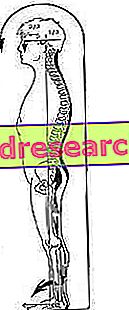What is tallonite?

The underlying causes of this suffering are many.
At the origin of the painful calcaneal symptoms, traumatic, metabolic, neurological and congenital pathologies may occur, which in turn can affect the soft parts (tendinitis, bursitis, tendon inflammation, fascitis) or the bony ones (stress fractures, heel spurs, arthrosis heel astragalus or more rarely tumors).
Even simple postural alterations can modify the breech structure and the distribution of the load on this area, resulting in the appearance of heels.
Causes
- Obesity / overweight;
- arthrosis and rheumatic diseases
- primary or secondary postural alterations
- Unsuitable footwear (high heels, safety shoes)
- intense or excessive sporting activity for your own possibilities
- metabolic (gout) and rheumatic diseases (ankylosing spondylitis, rheumatoid arthritis, chondrocalcinosis, psoriasis, etc.).
Heelitis symptoms
See in-depth article
Tallonite of the sportsman
The heelite of the sportsman in most cases arises due to the continuous stress and microtrauma suffered by the foot. These are real micro-lesions that over time can alter the normal function of the hindfoot.

Very often the tennis shoes found in supermarkets are not suitable to withstand the very strong functional stresses suffered by the foot during motor activity. In sporting goods stores, on the other hand, you can find special footwear equipped, for example, with shock adsorber, a special material located in the heel able to reduce vibrations and repeated impact shock.
In women who wear high-heeled shoes, the heel may arise when passing from one shoe to another. In fact the pressure exerted on the heel decreases as the height of the shoe increases. When wearing a lower shoe, the heel may be unprepared to withstand the increased pressure on the bone and ligament structures.
It is no coincidence that overweight or particularly heavy subjects are advised to purchase heeled sports shoes to relieve pressure on the hindfoot and limit the risk of injury.
Even the land on which physical activity is practiced is very important as particularly rigid surfaces such as synthetic fields, asphalt and concrete amplify the impact shock. Also poor musculature and summary athletic preparation can contribute to the appearance of calcaneal pathologies.
Heal from heel pain
IMPORTANCE OF A CORRECT DIAGNOSIS
As we have seen, pathologies affecting the hindfoot are numerous and of various etiologies.
It therefore becomes essential to diagnose the cause of heel pain as soon as possible by means of a specialist examination (x-ray, postural examination, ultrasound, MRI, etc.).
REST BEFORE EVERYTHING
Fortunately, the common heel heal within a few days (1-3 weeks depending on the type and extent of the problem) except for some chronic forms that may require much longer healing times.
It is, however, of fundamental importance to promptly address the problem in order to avoid possible deterioration and to avoid the risk of compensatory parameters.
In fact, the person affected by heel tend to limit the load on the painful foot by adapting posture and walking. In the long run such compensations can cause serious problems to other body structures (pelvis, spine and knees).
It is therefore advisable to suspend physical activity at the first painful symptoms at least until the normal function of the hindfoot has been restored. It is also advisable to apply ice on the painful area in the acute phase of the trauma.
It is useless and dangerous to continue training by trying to suppress pain with painkillers and anti-inflammatories. Overloading an already compromised anatomical structure could cause much more serious injuries and the prolongation of the pathology could make it chronic, therefore difficult to cure.
If the problem is not resolved after observing a two-week rest period, further investigations should be carried out to determine more precisely the source of the pain. It may happen that the simple radiographic examination leads to an incorrect interpretation of the pathology.
Stretching exercises in the plantar fascia, calf and Achilles tendon are especially useful for plantar fasciitis.


In many cases the association with physical therapies (ultrasound, cryo-ultrasound, laser therapy, ionoferesis, massage) is recommended. In the rehabilitation period, proprioceptive and plantar sensitization exercises can be very useful.
See also: Tallonitis Medication »



